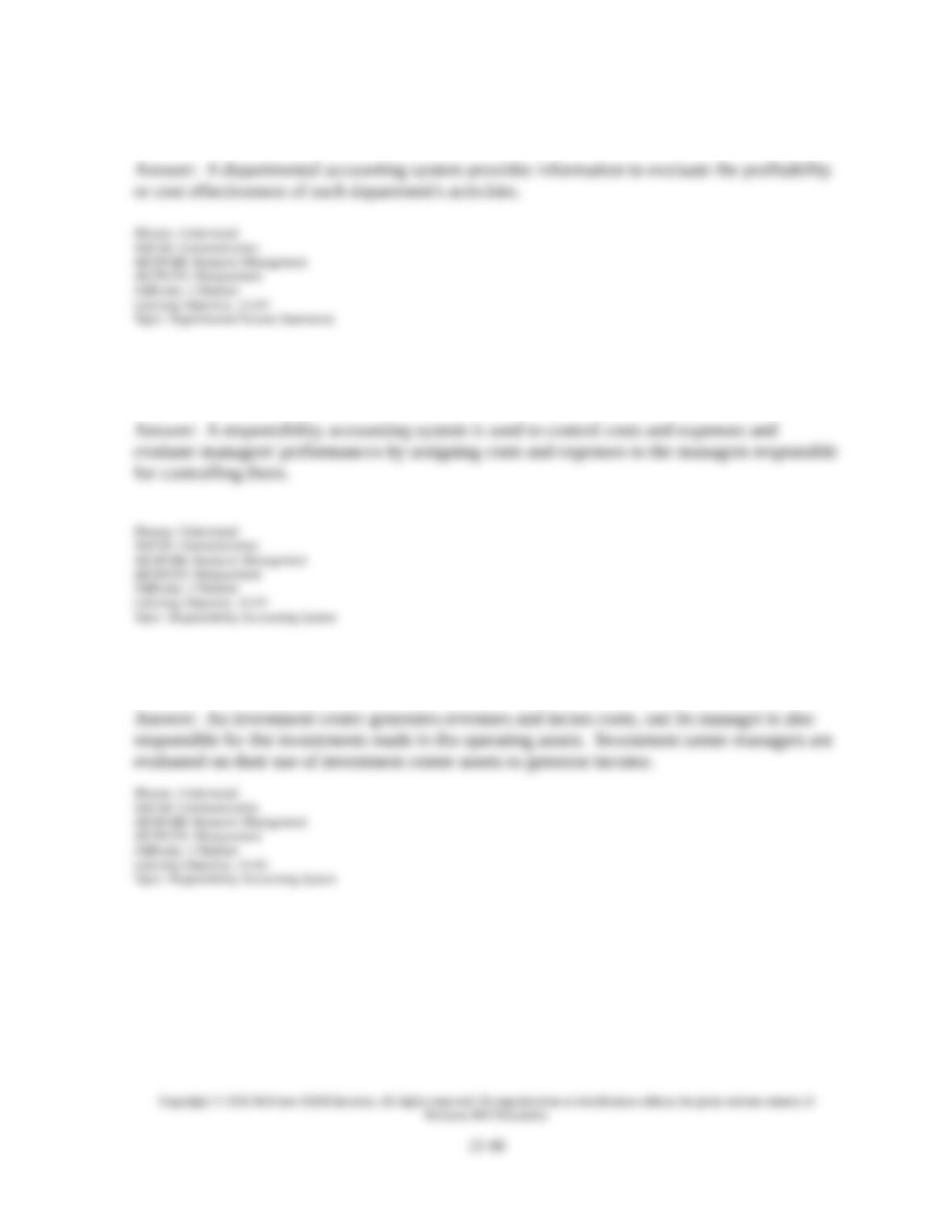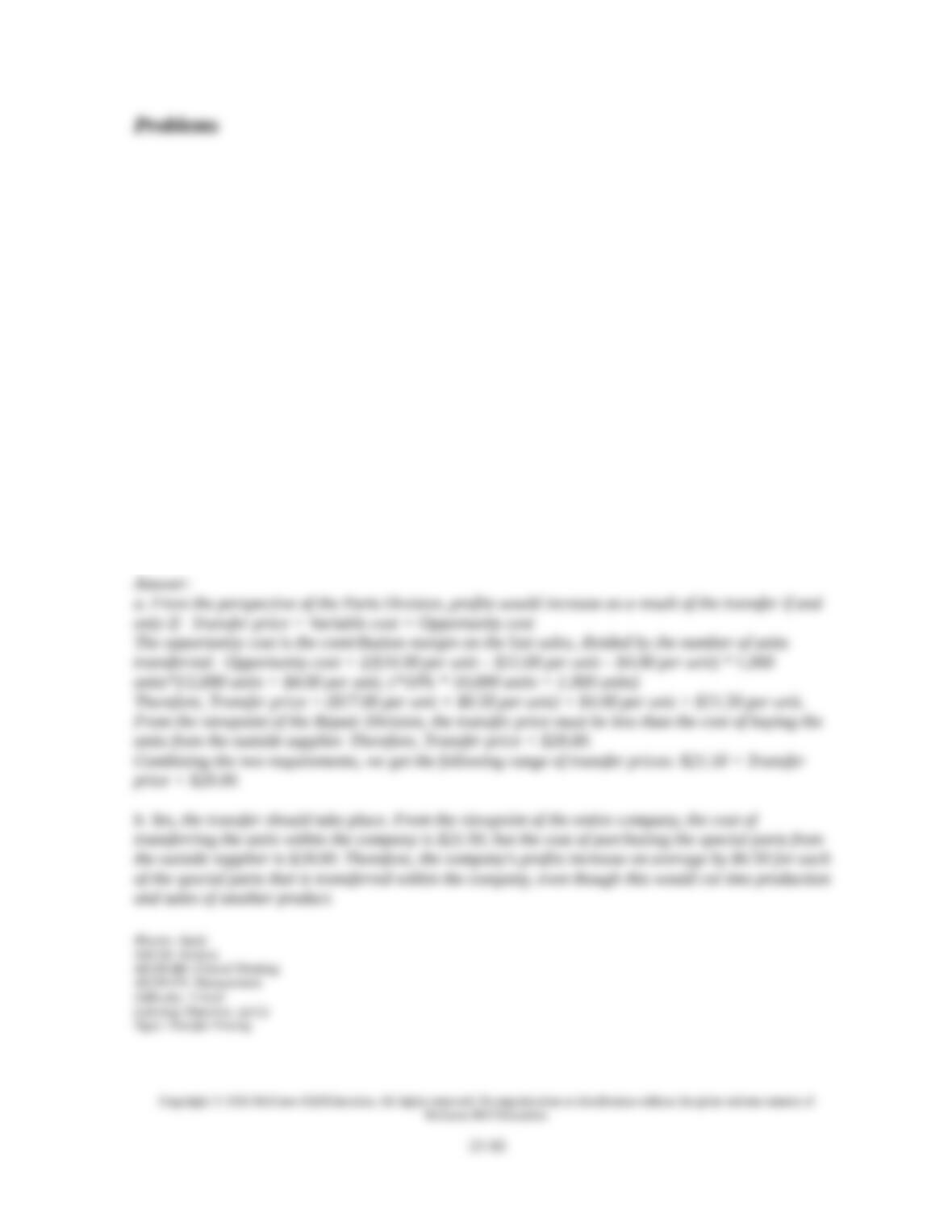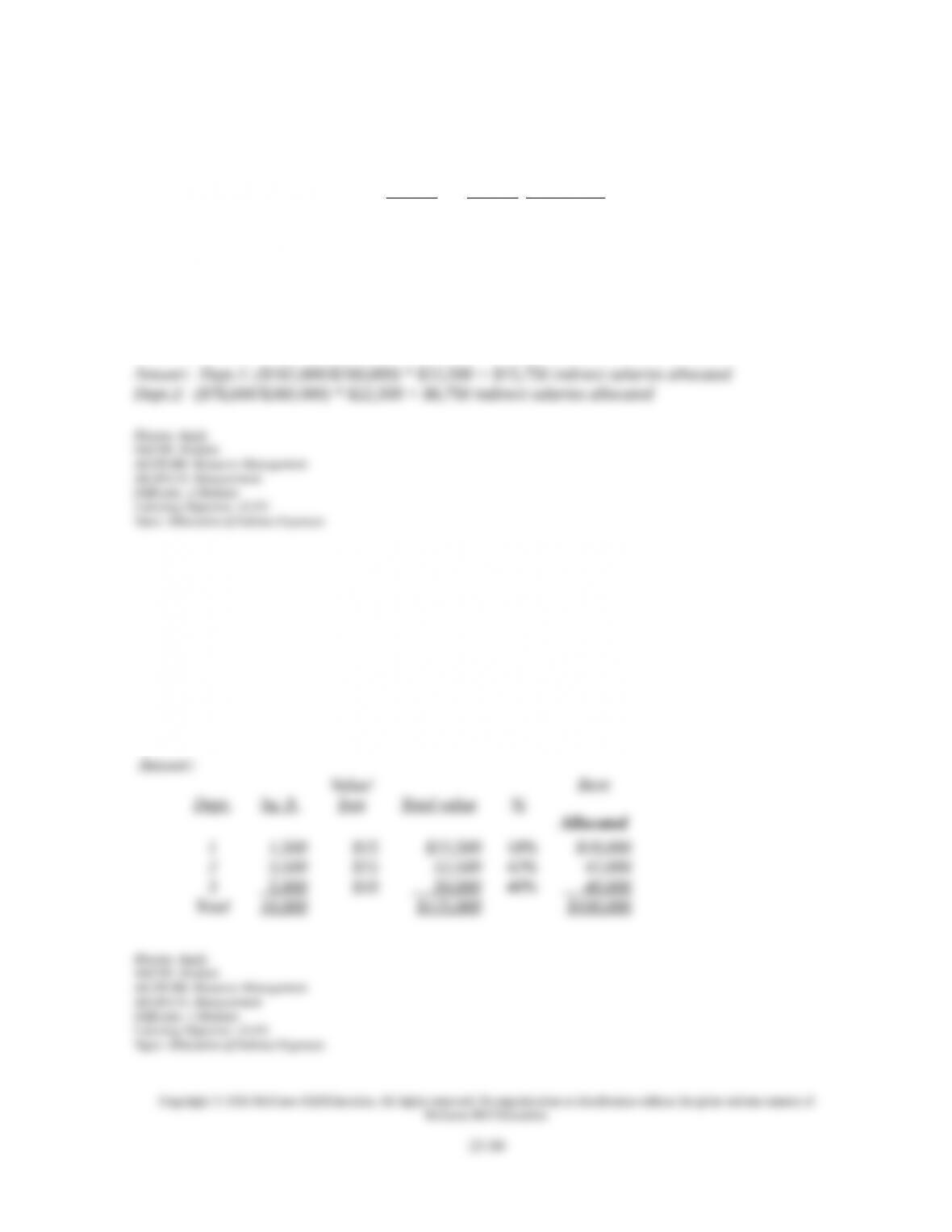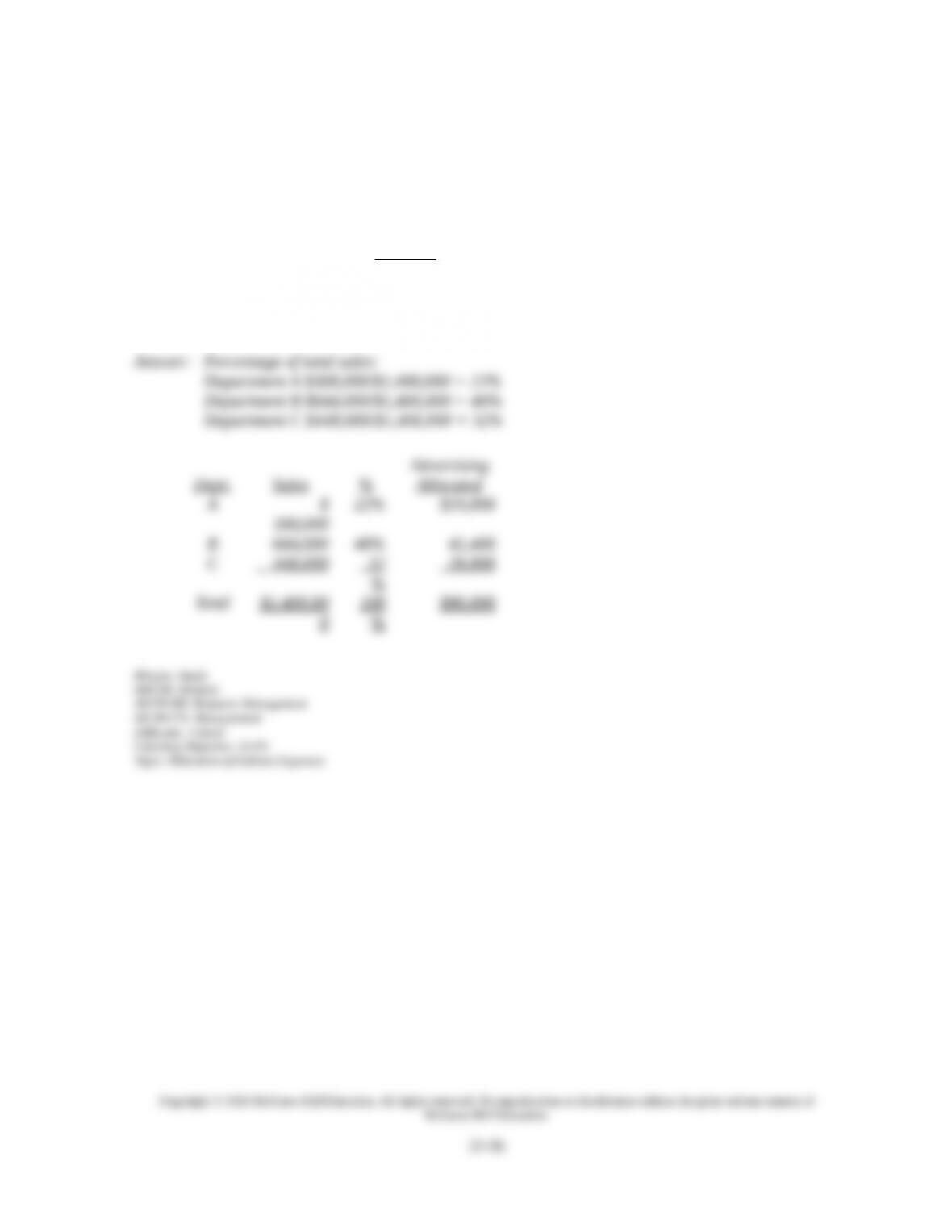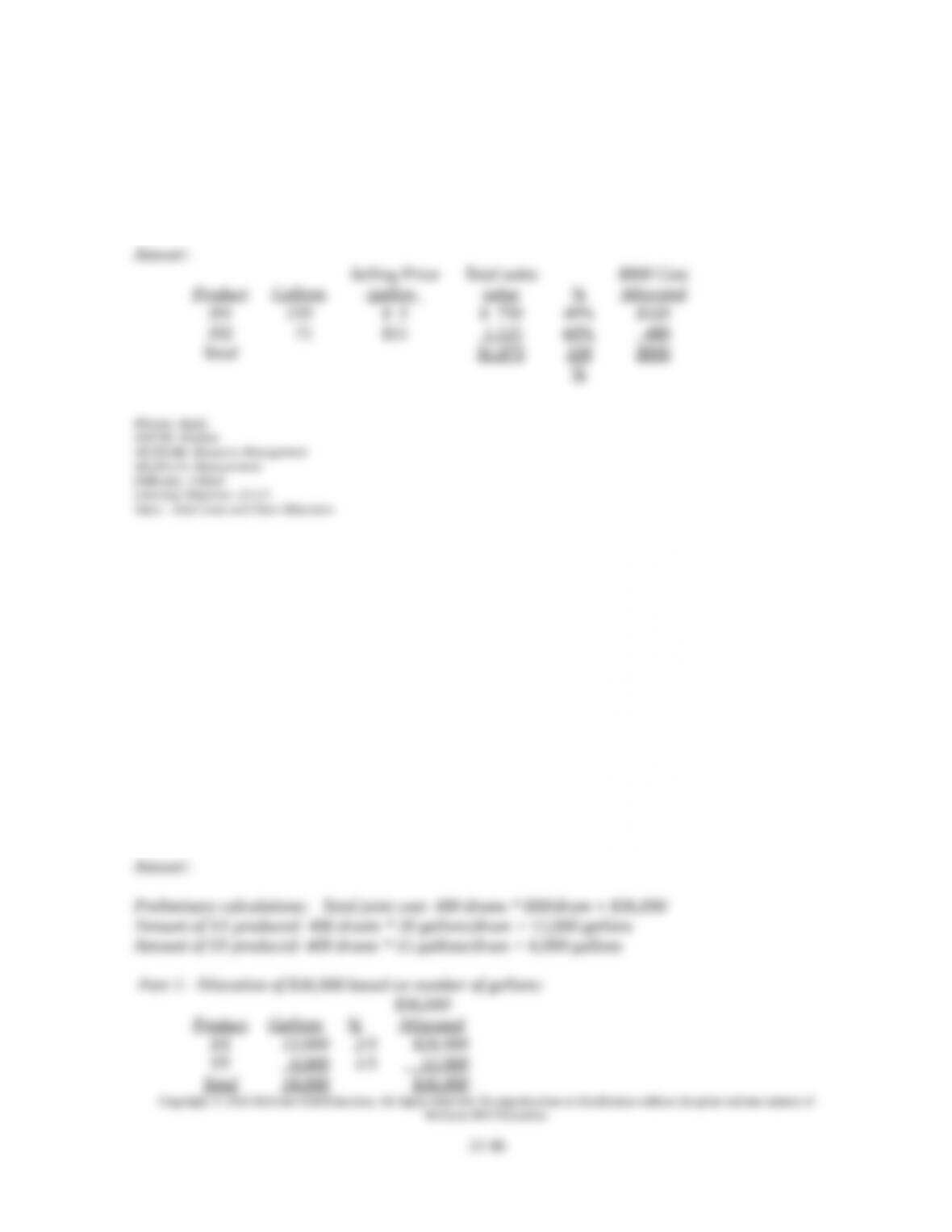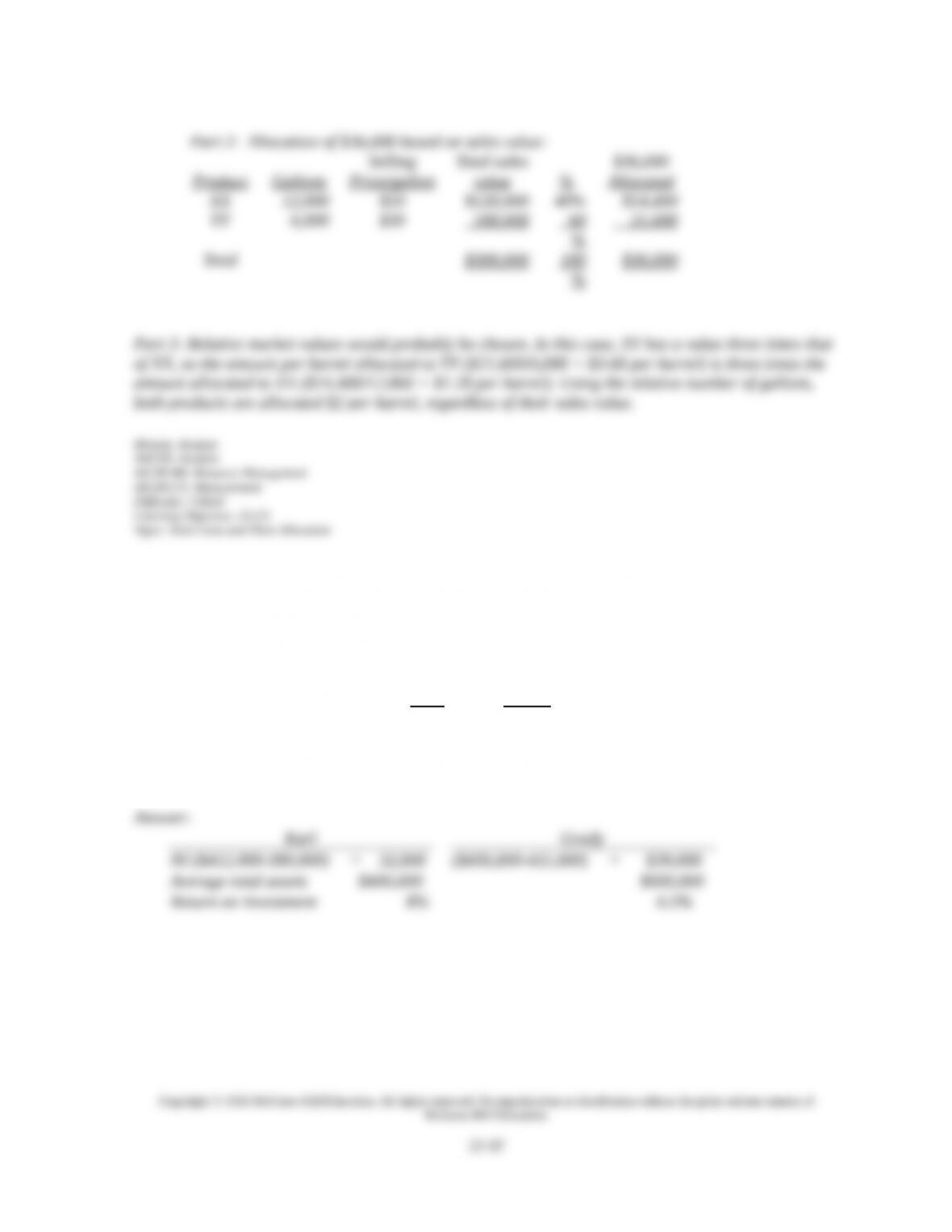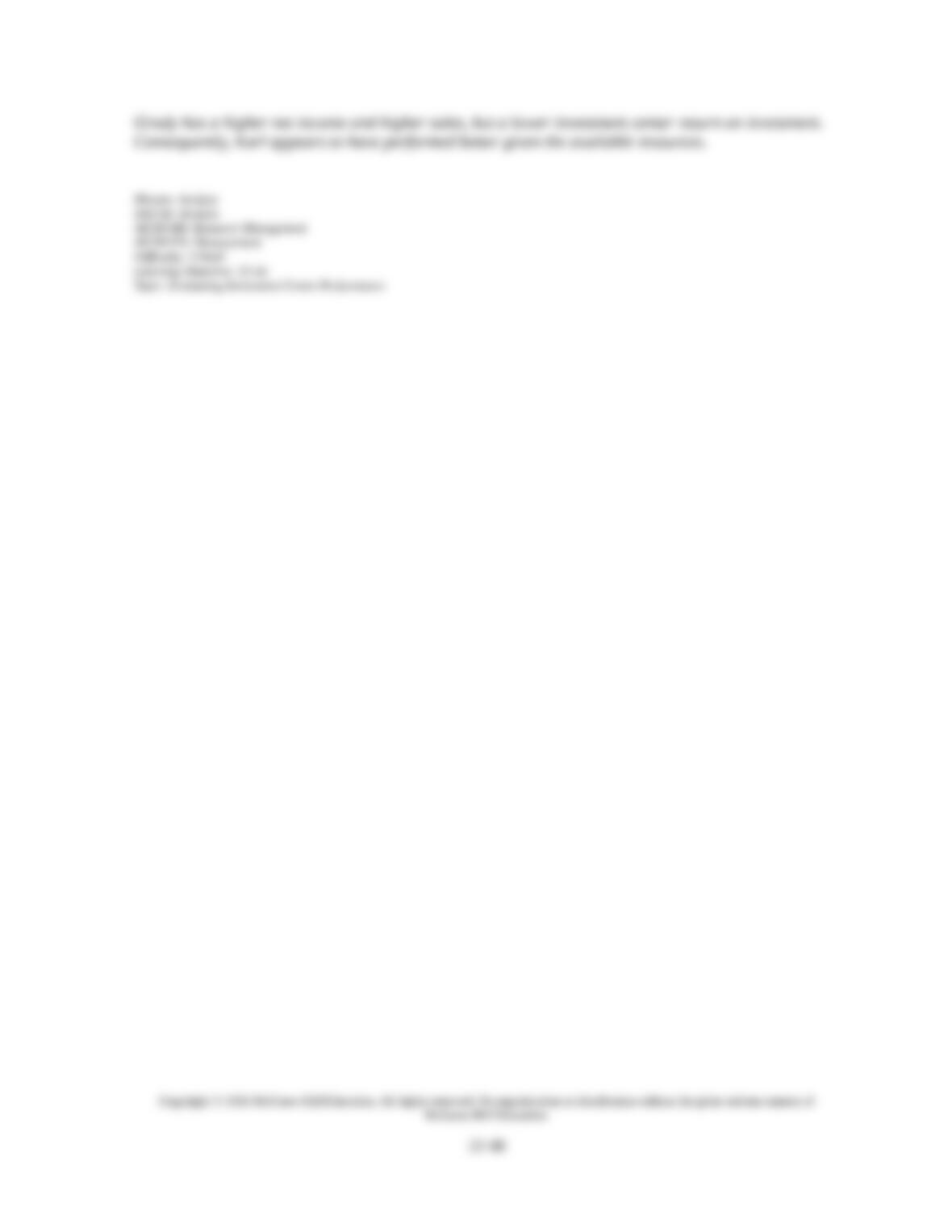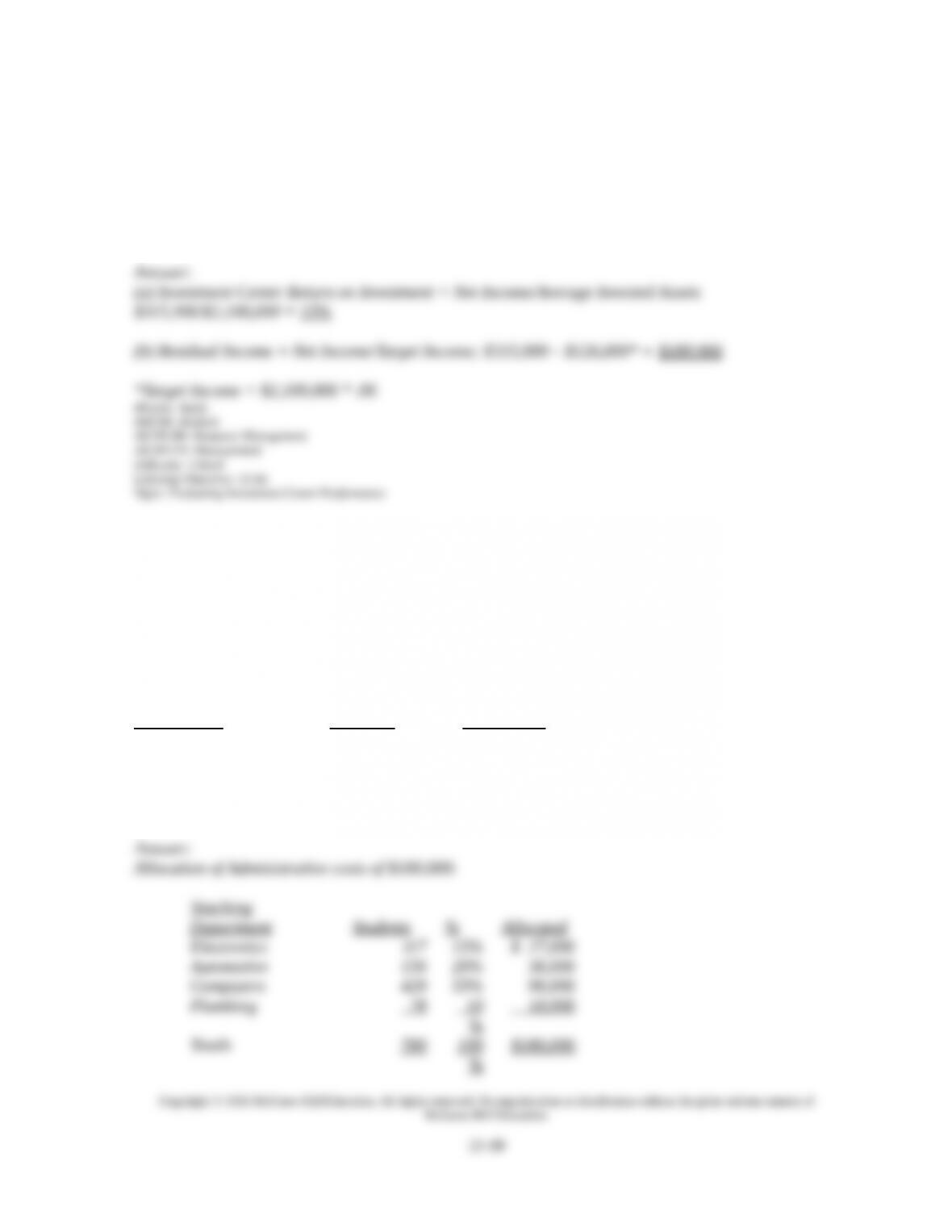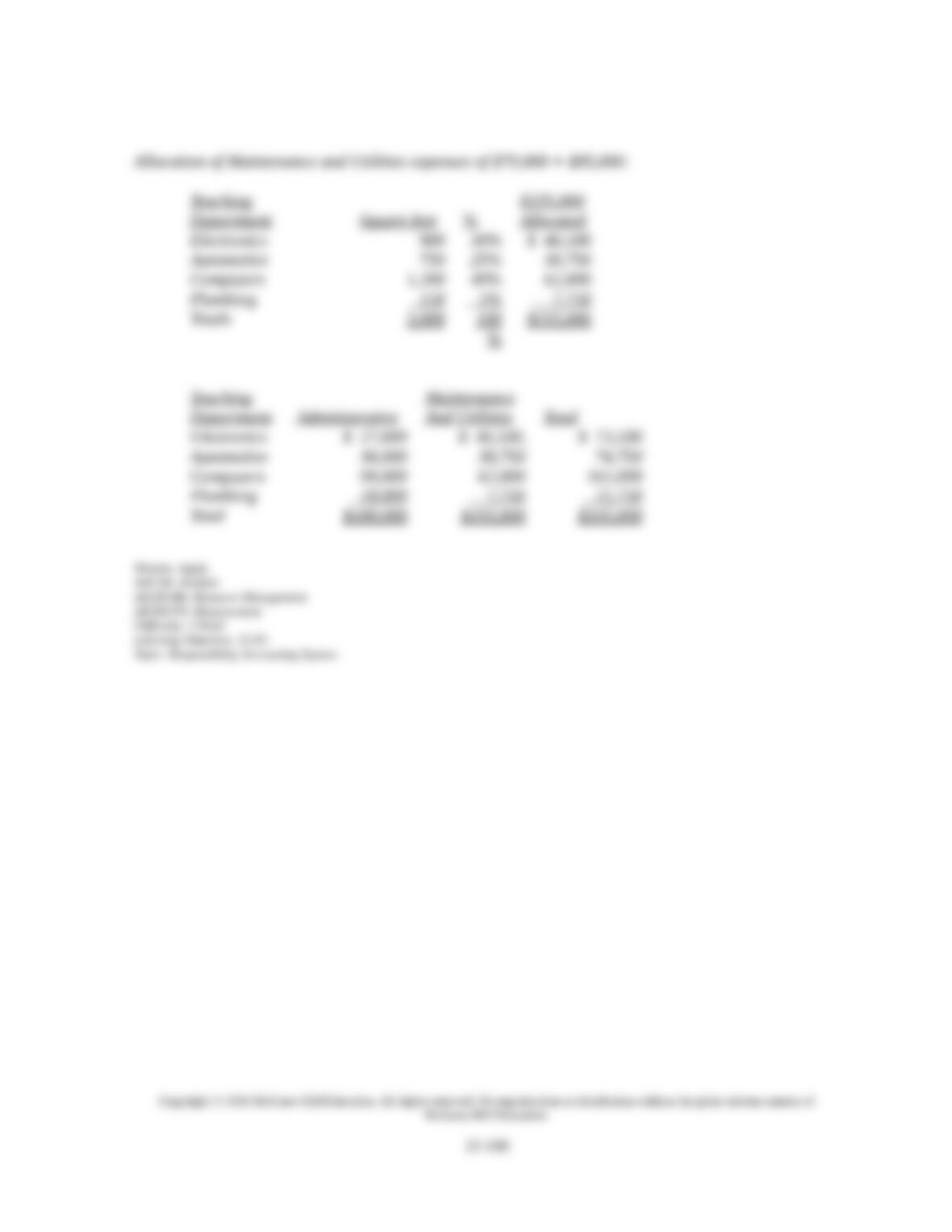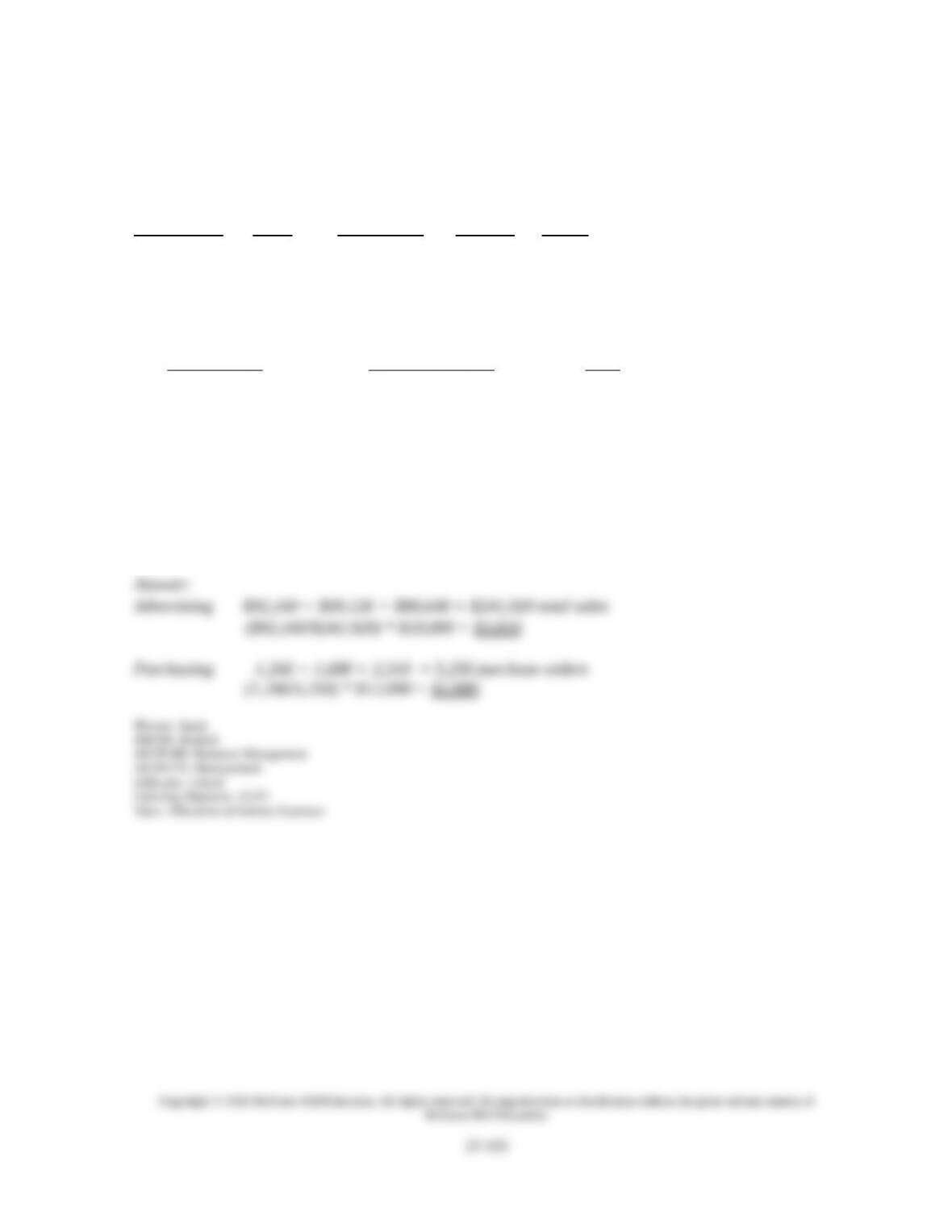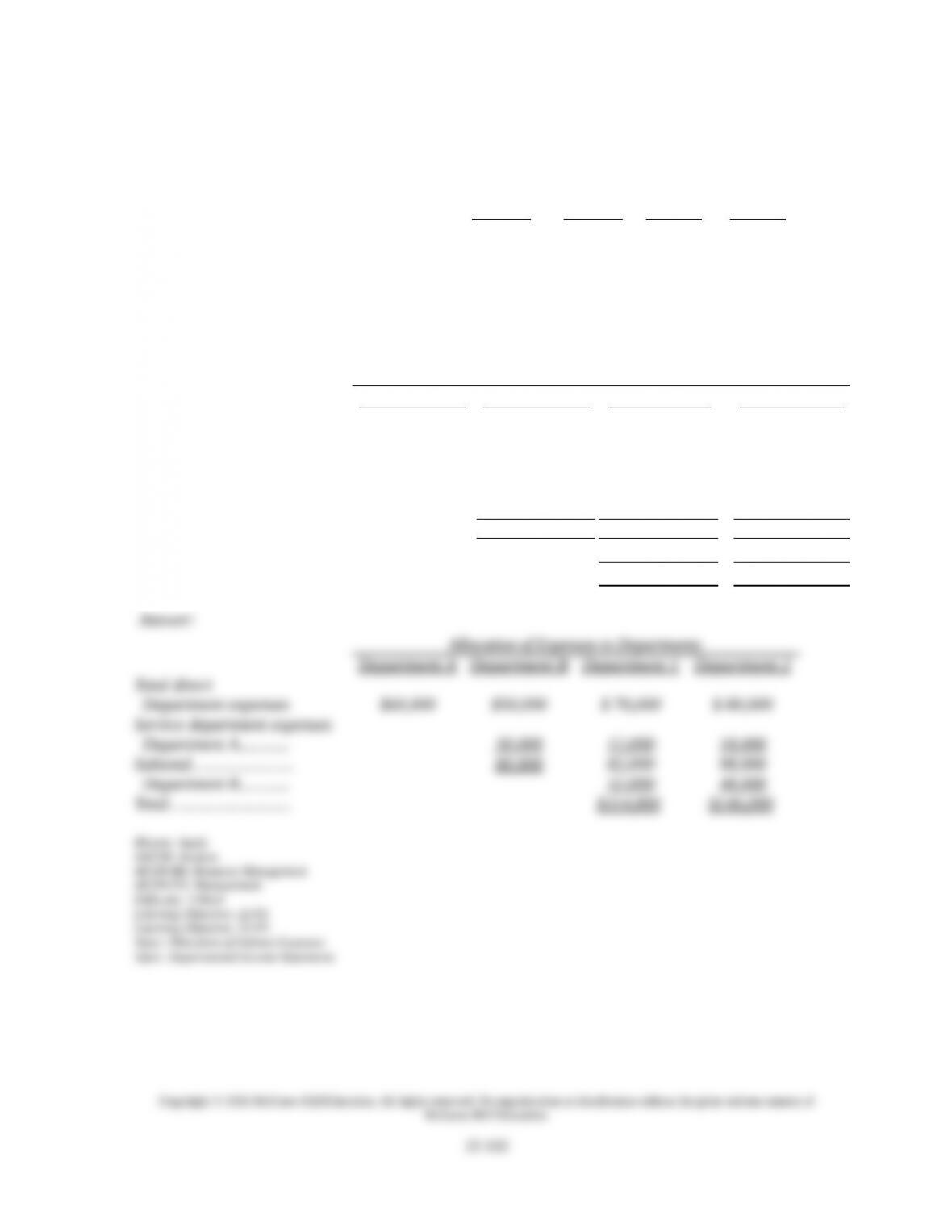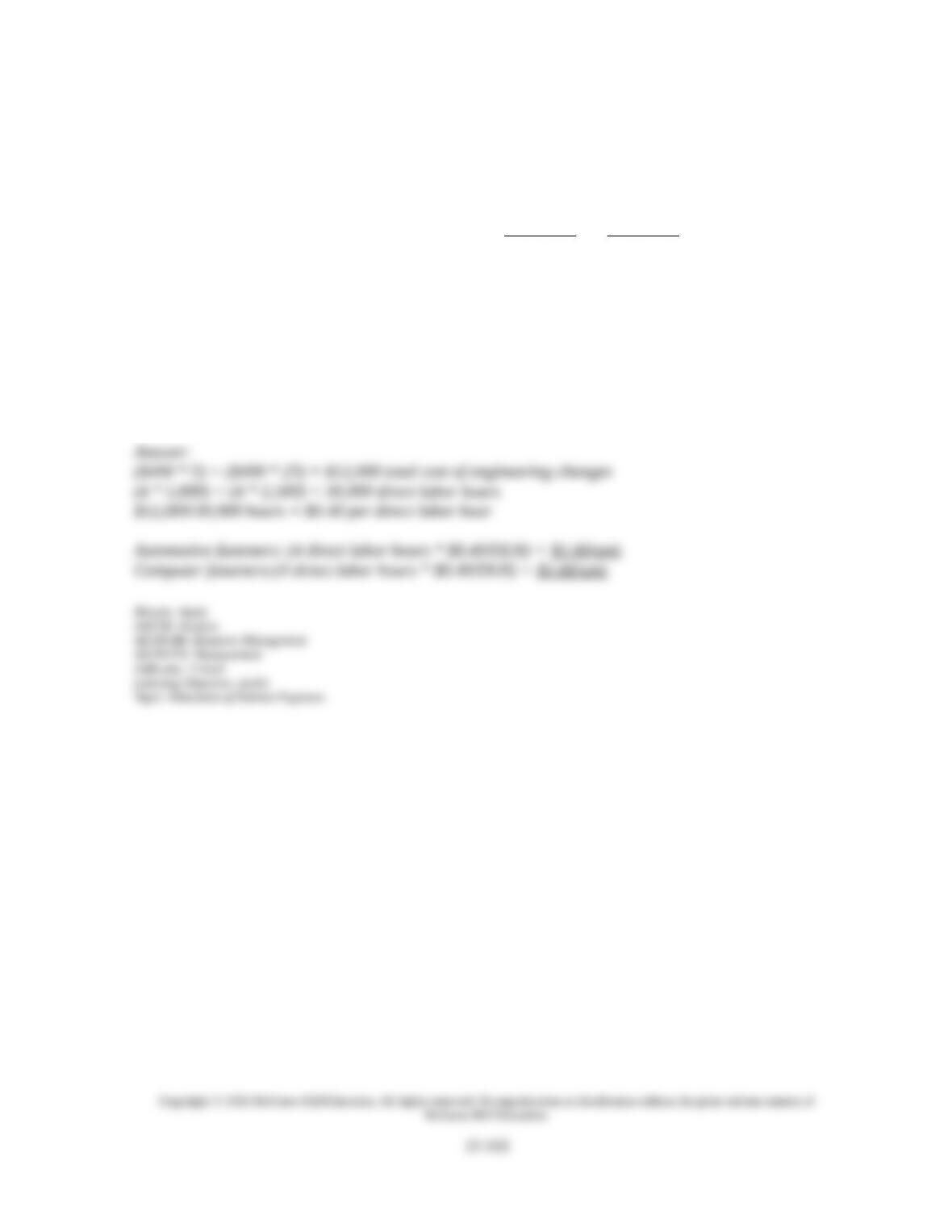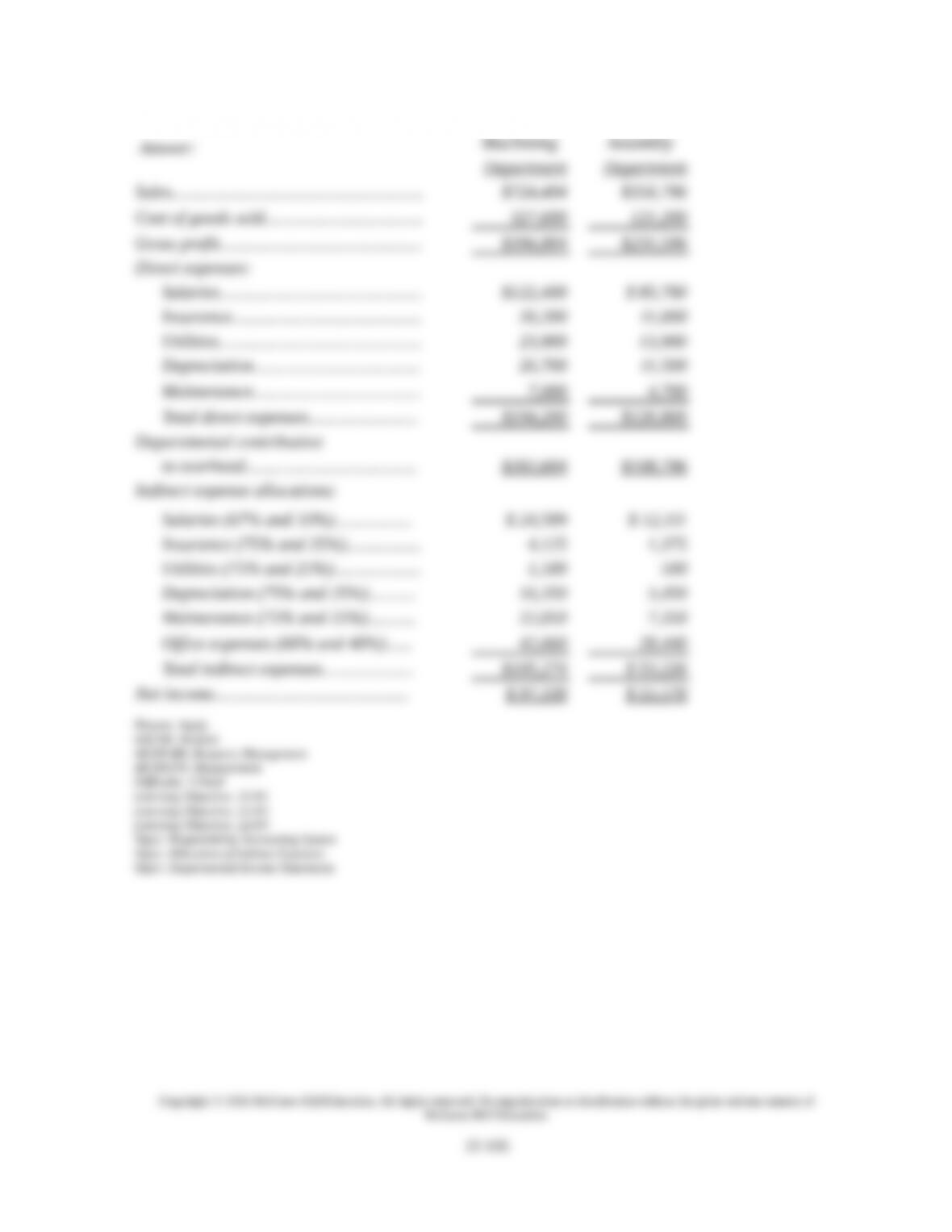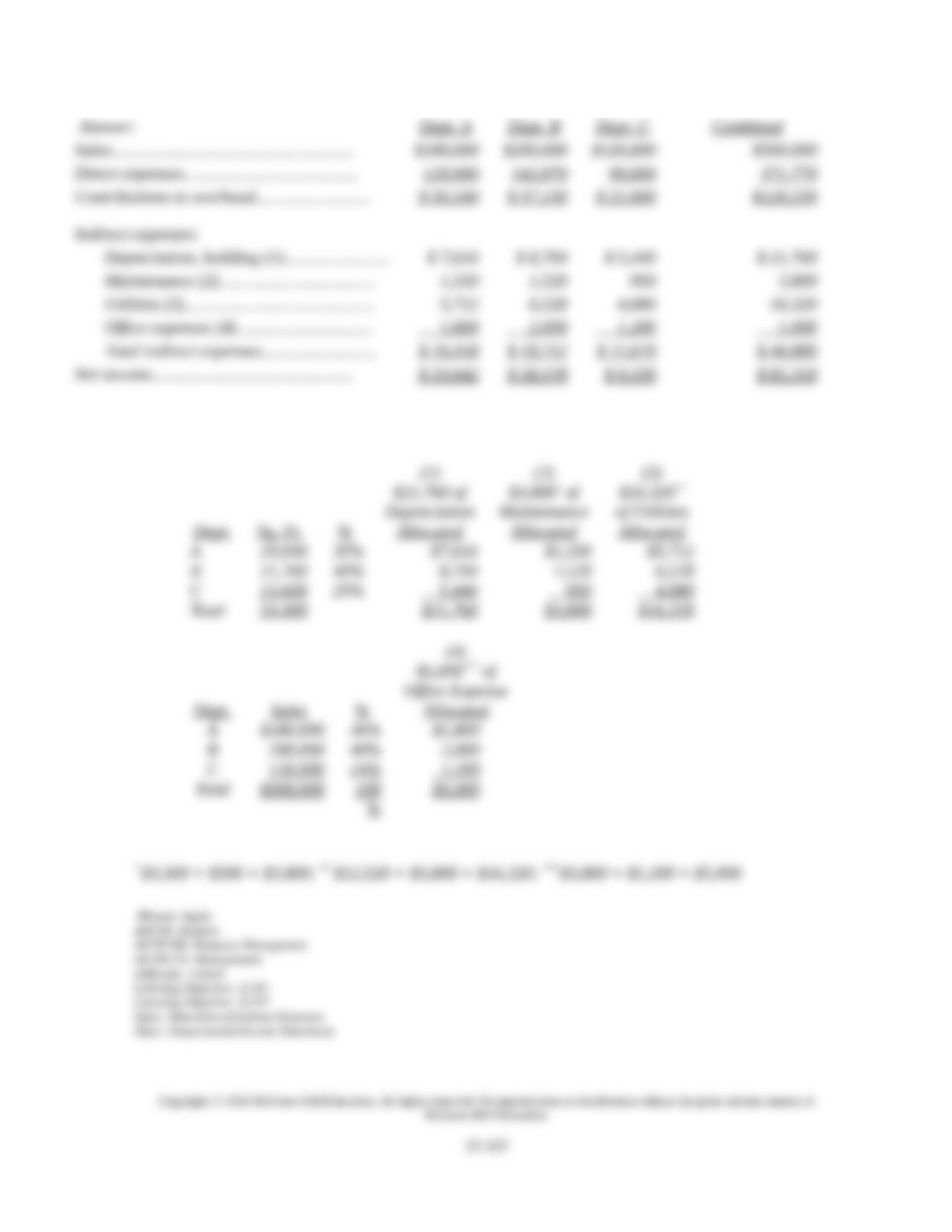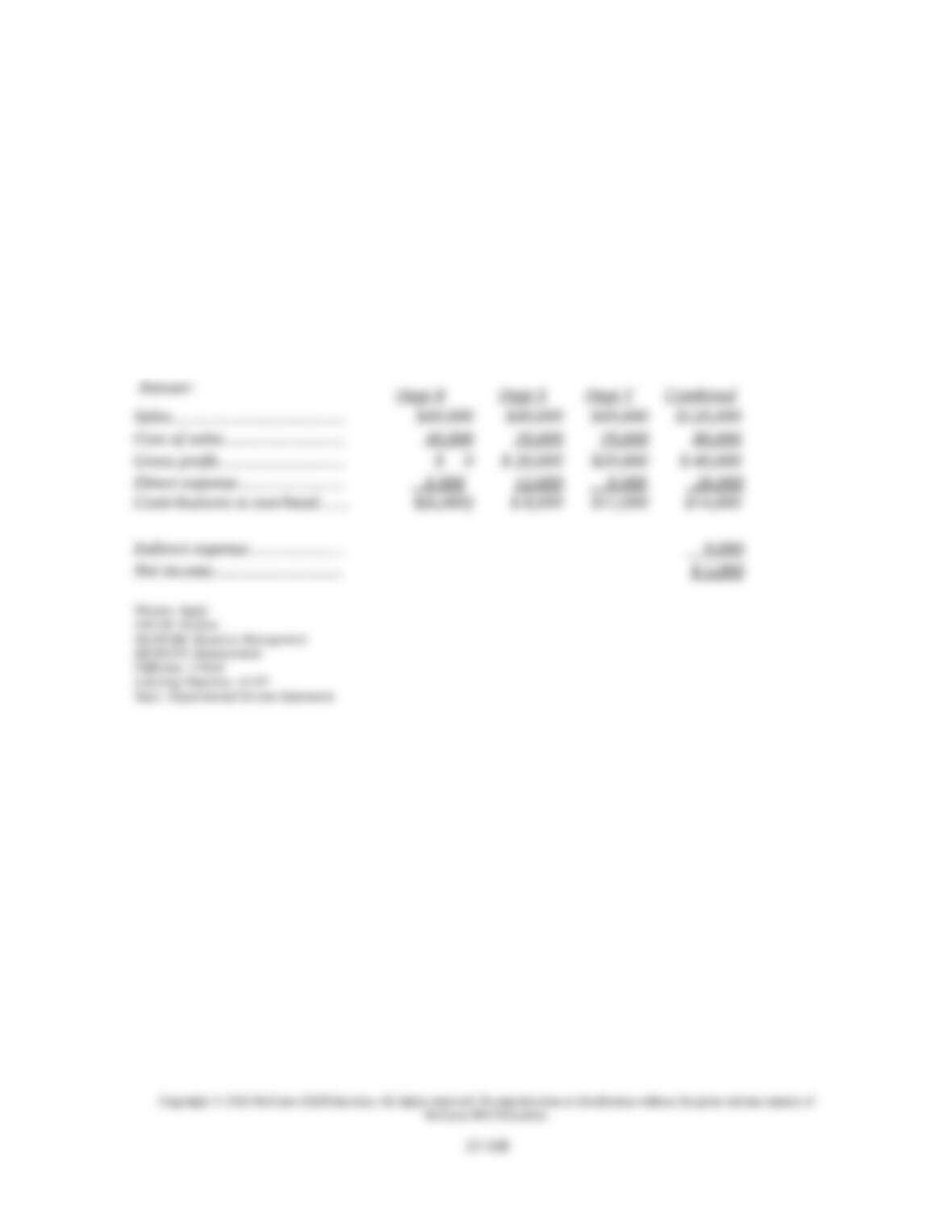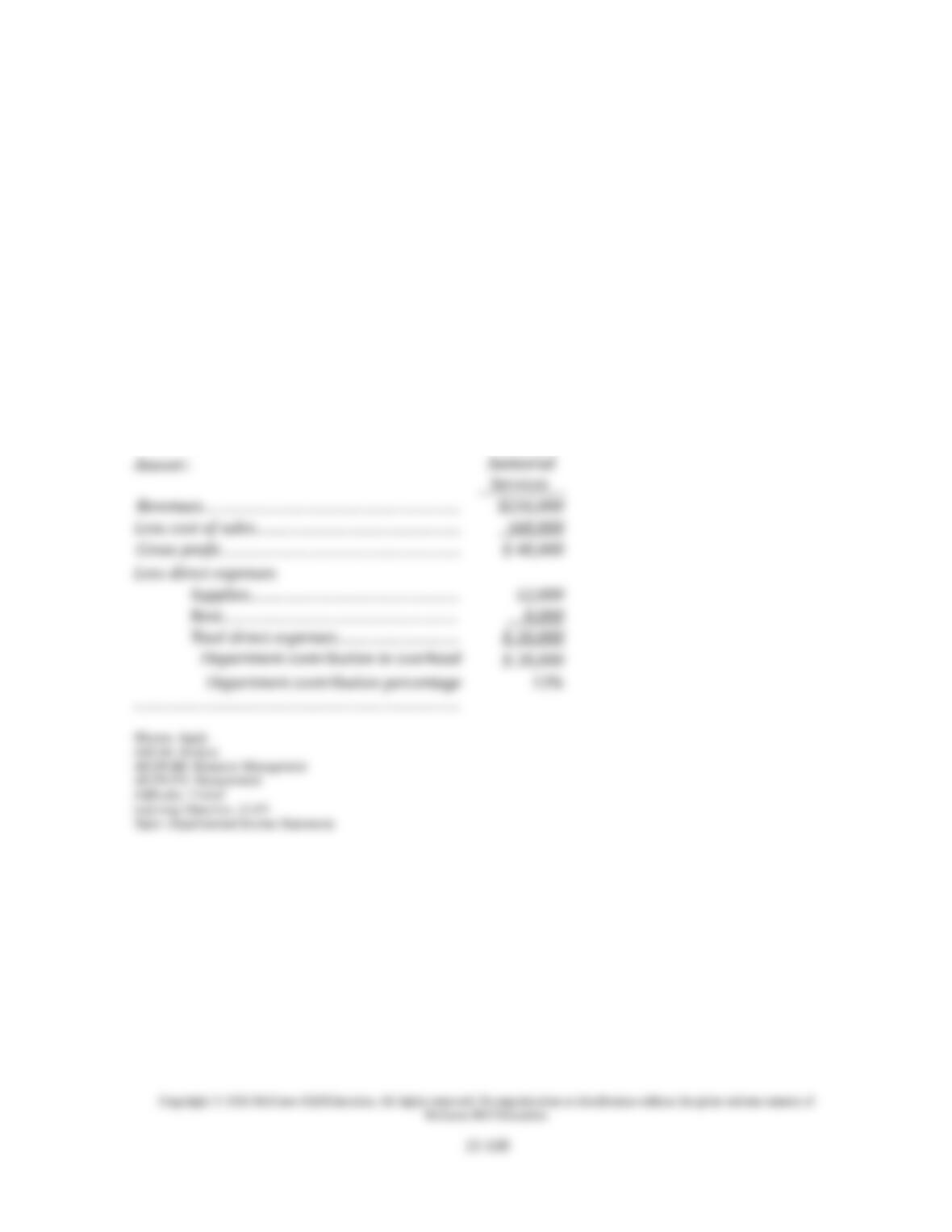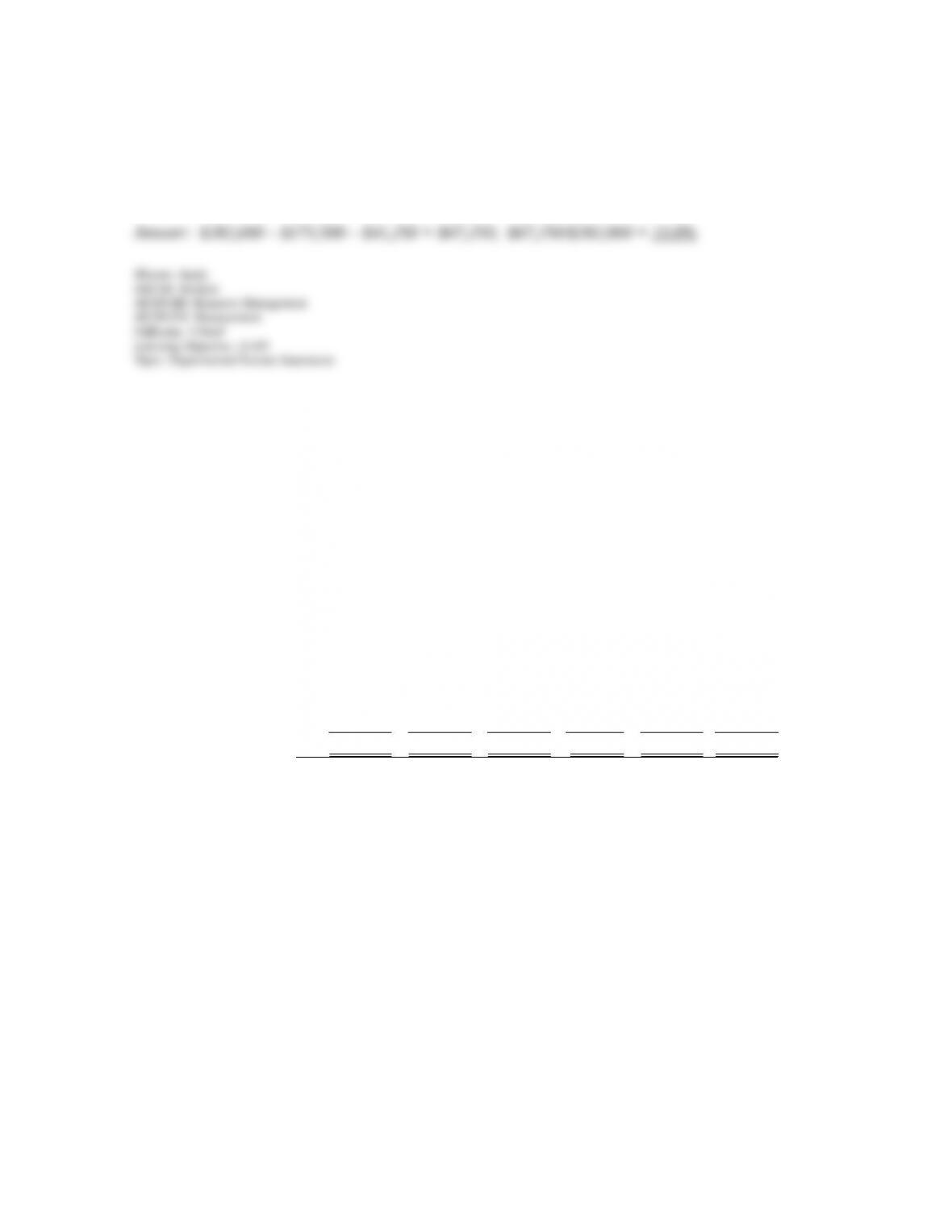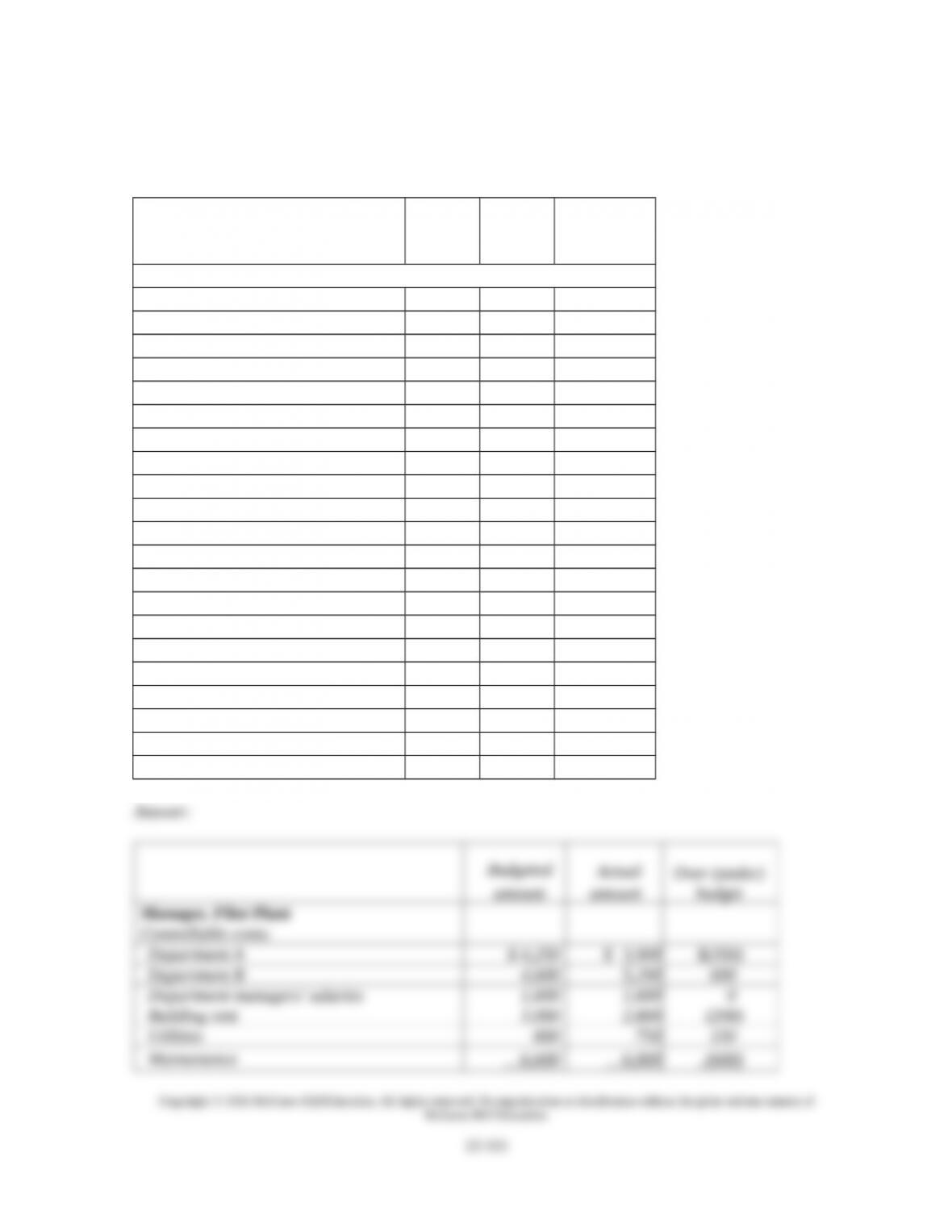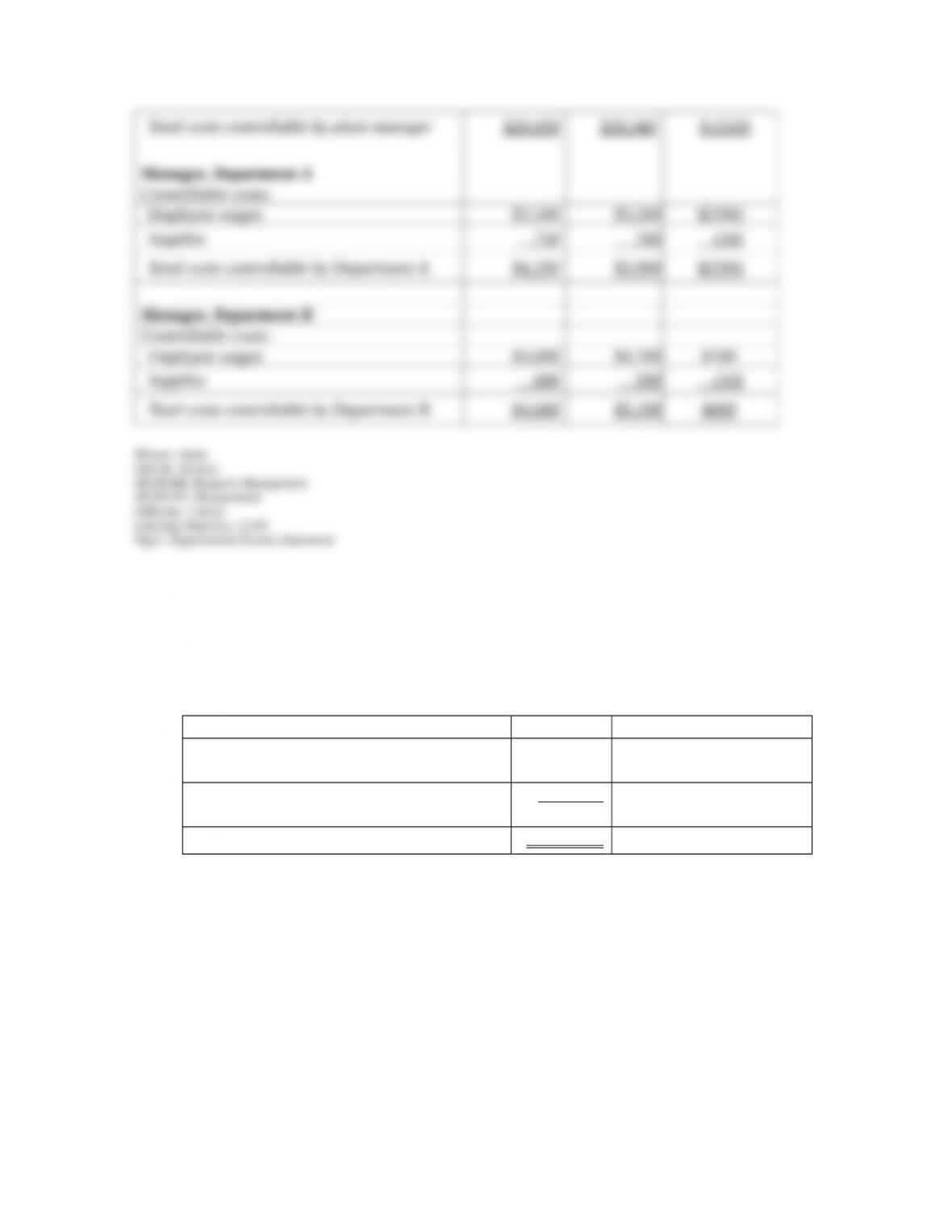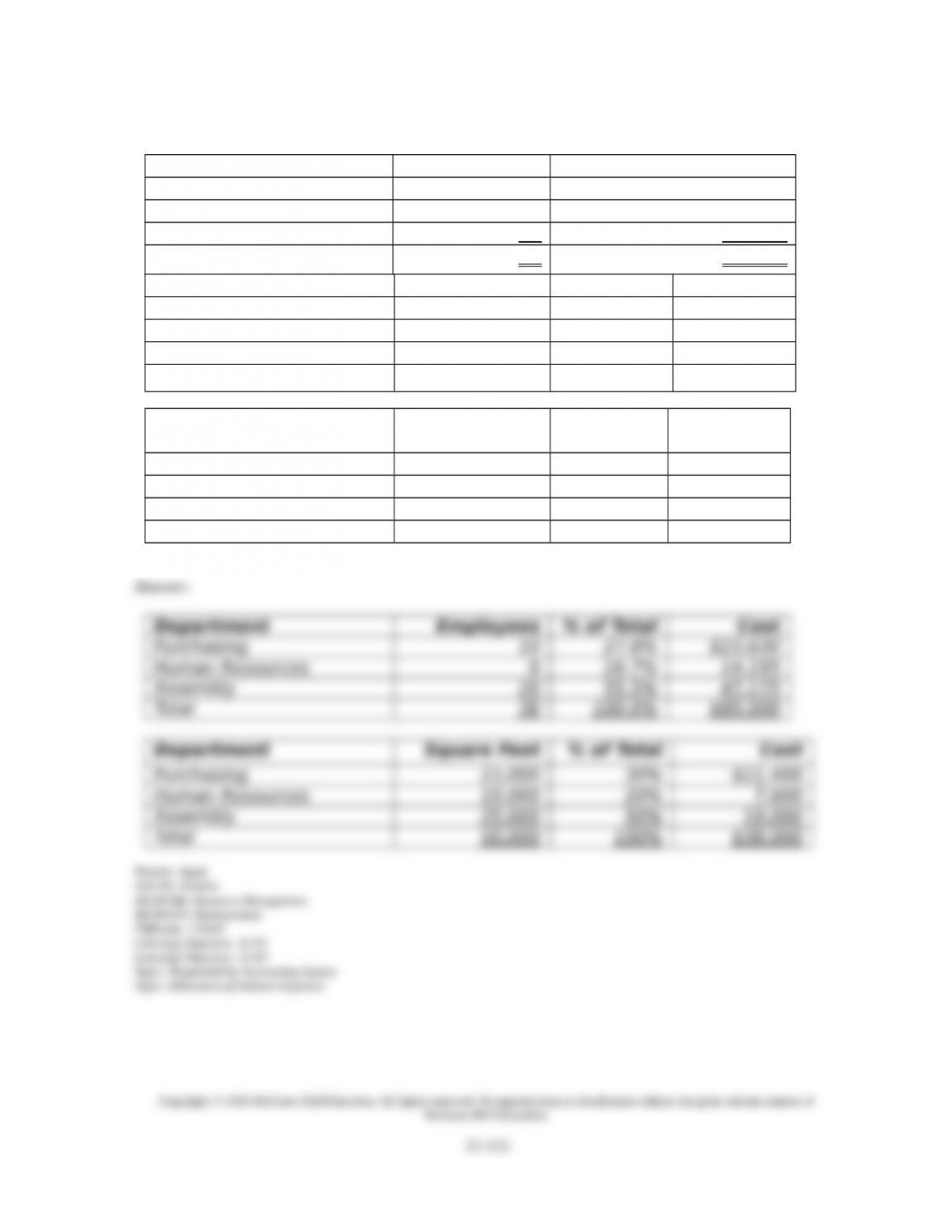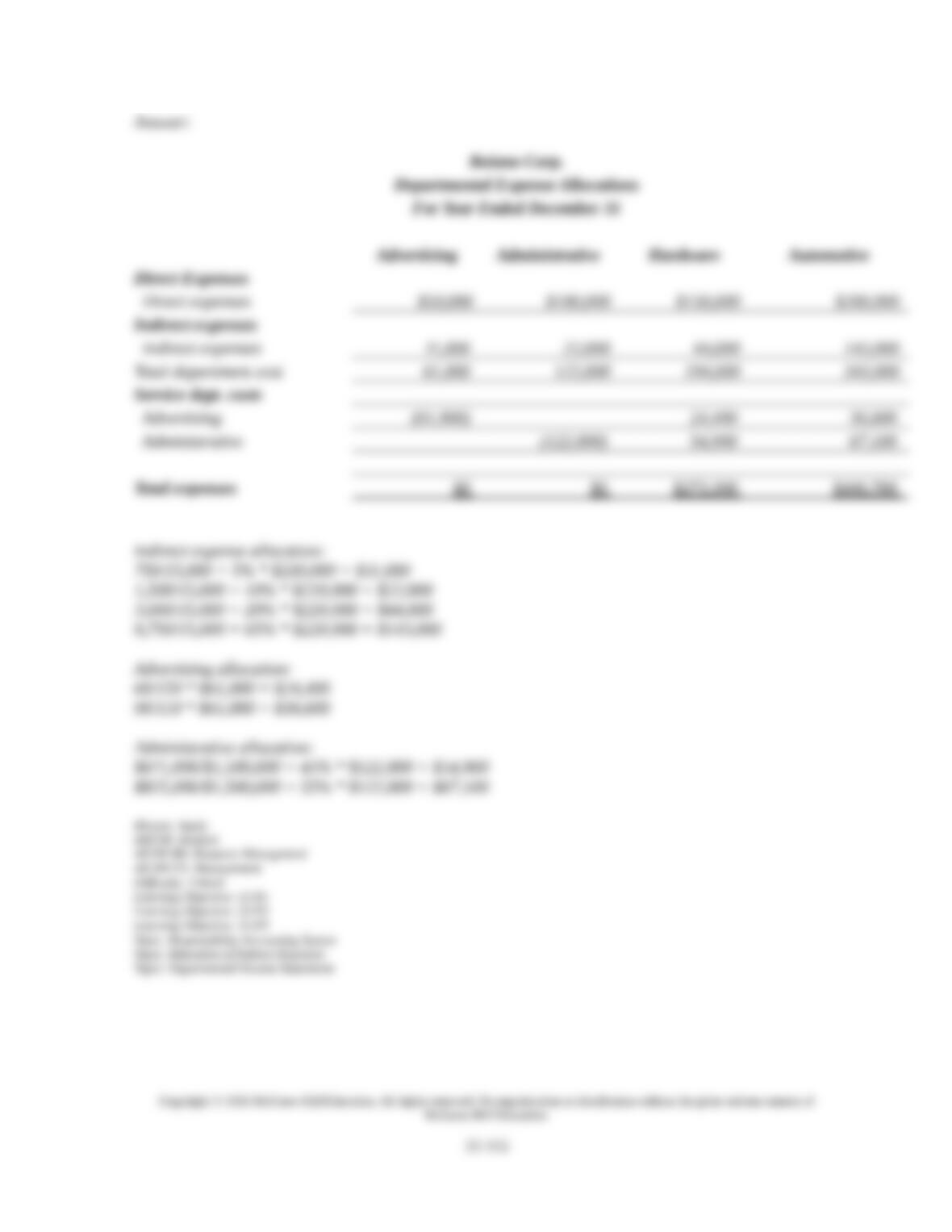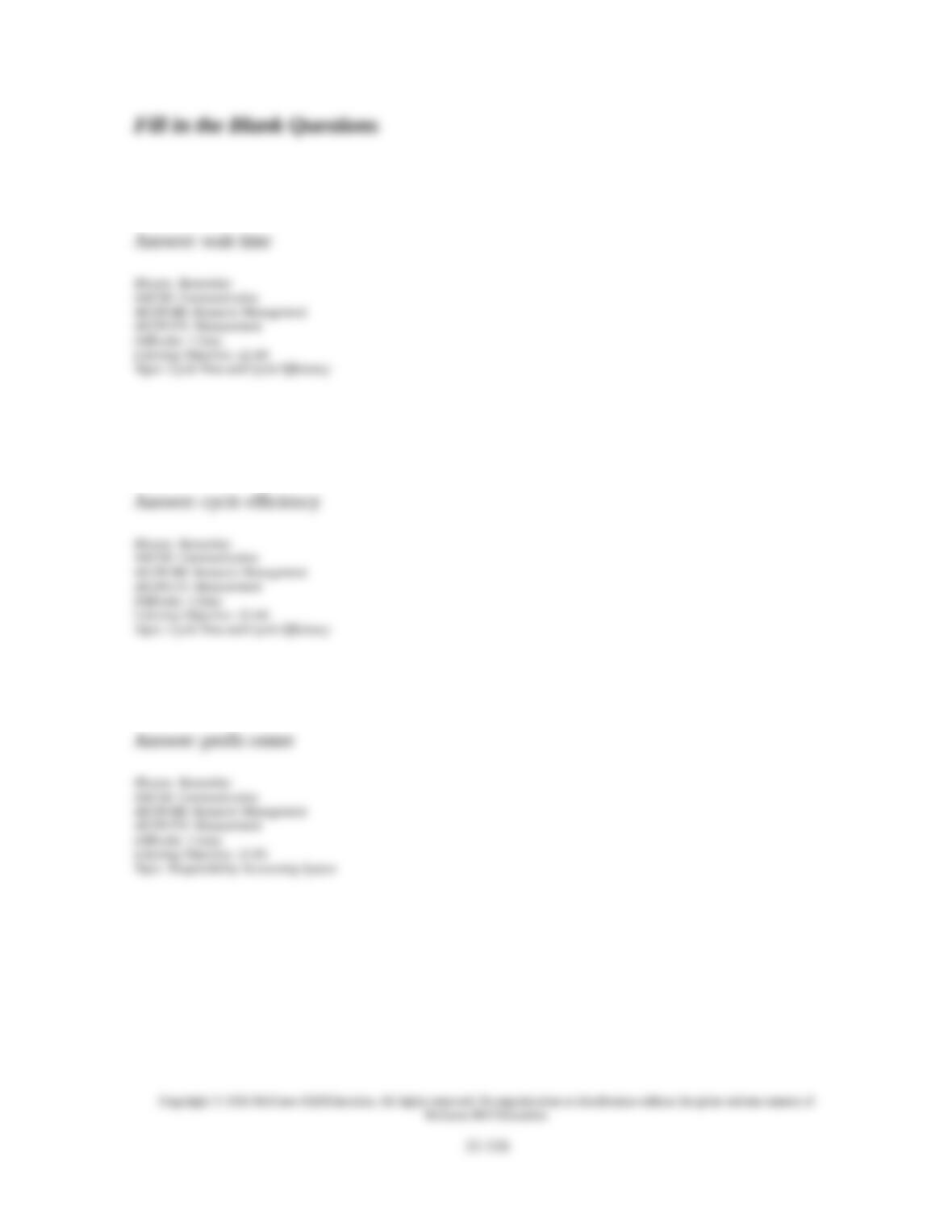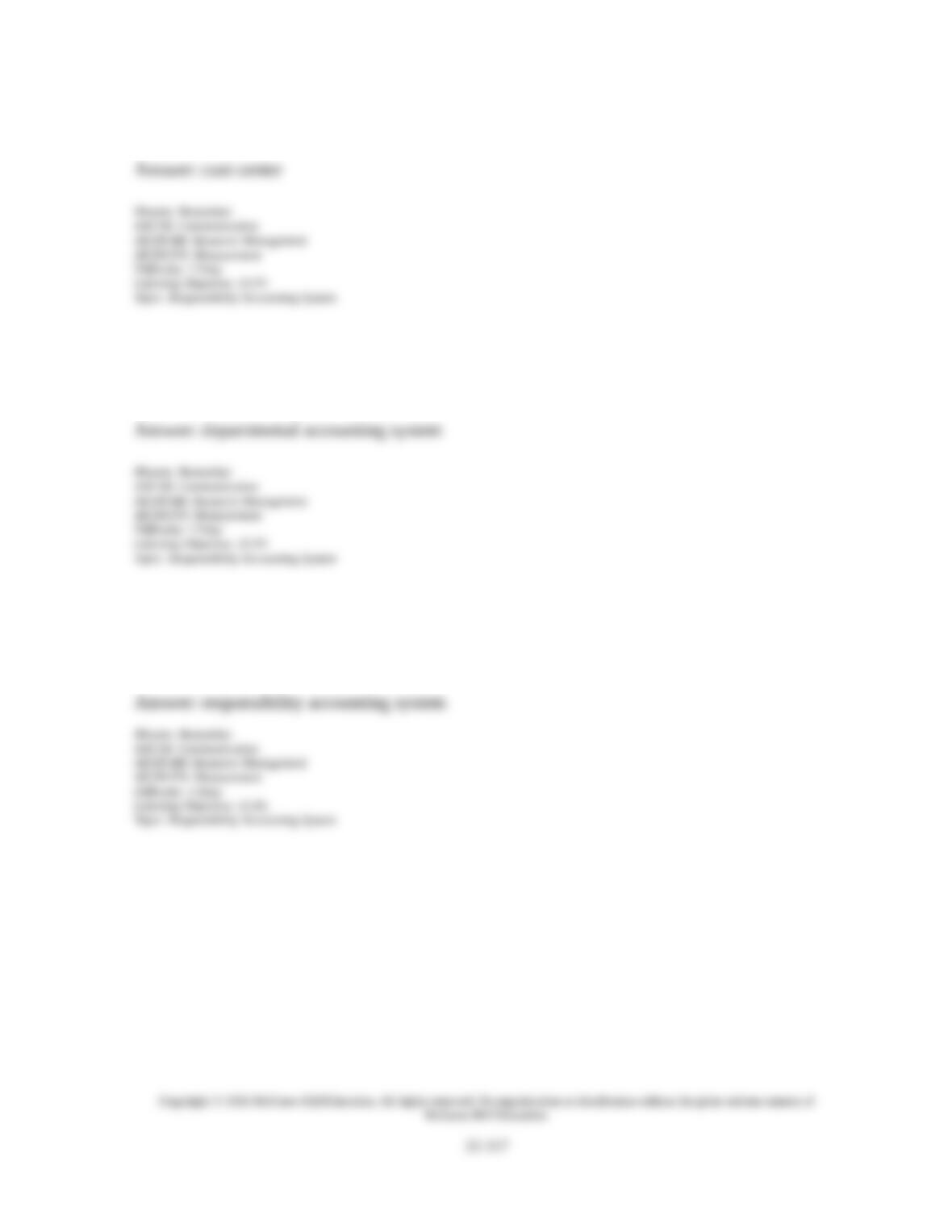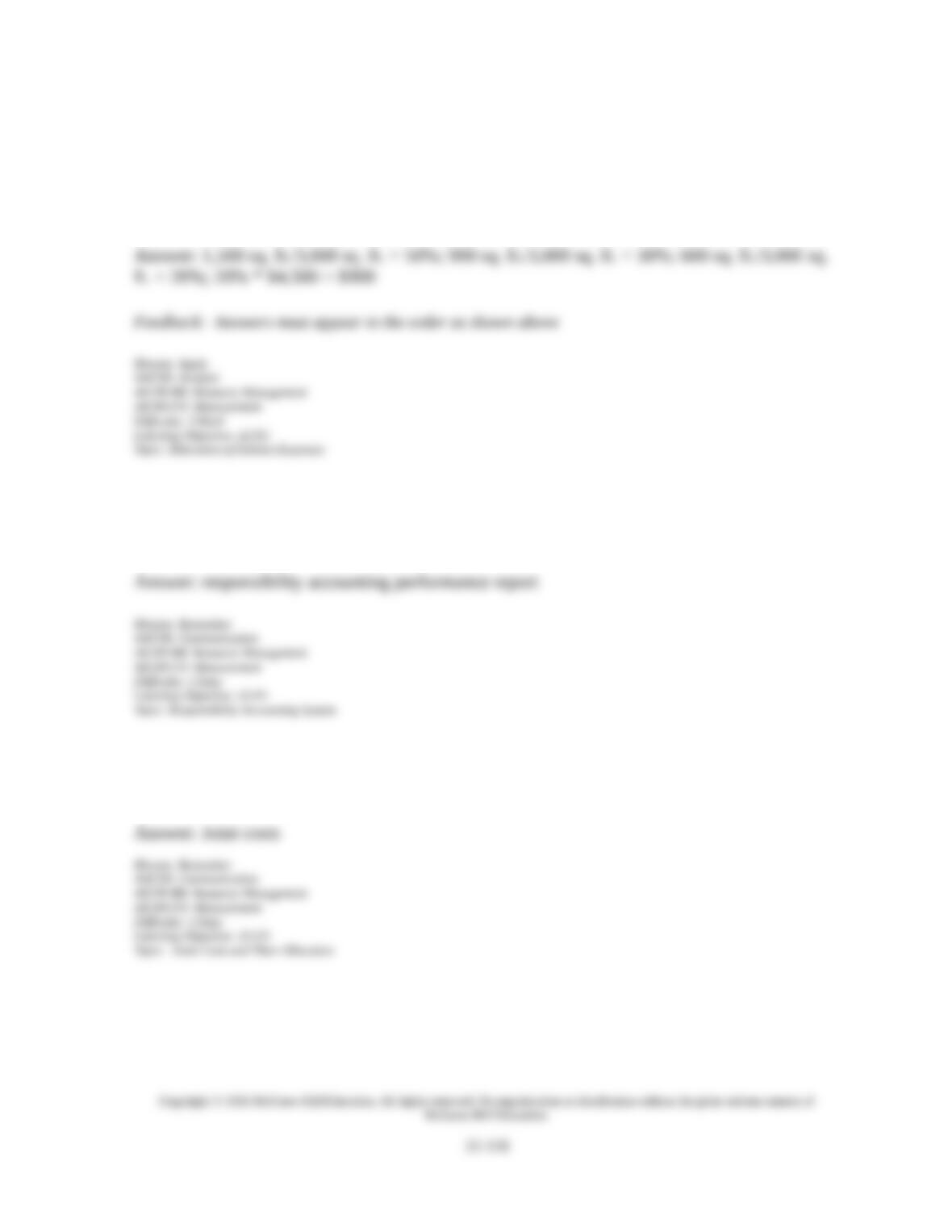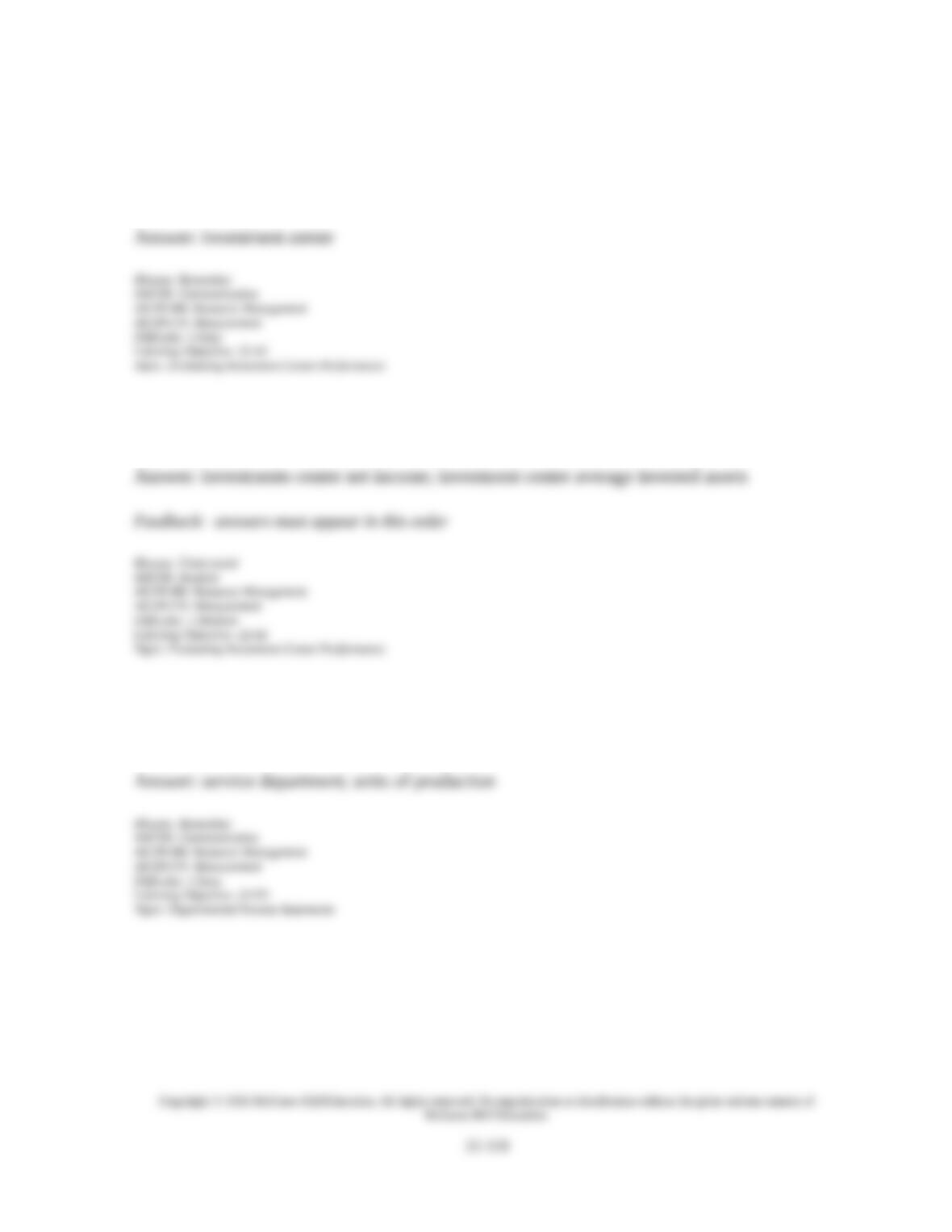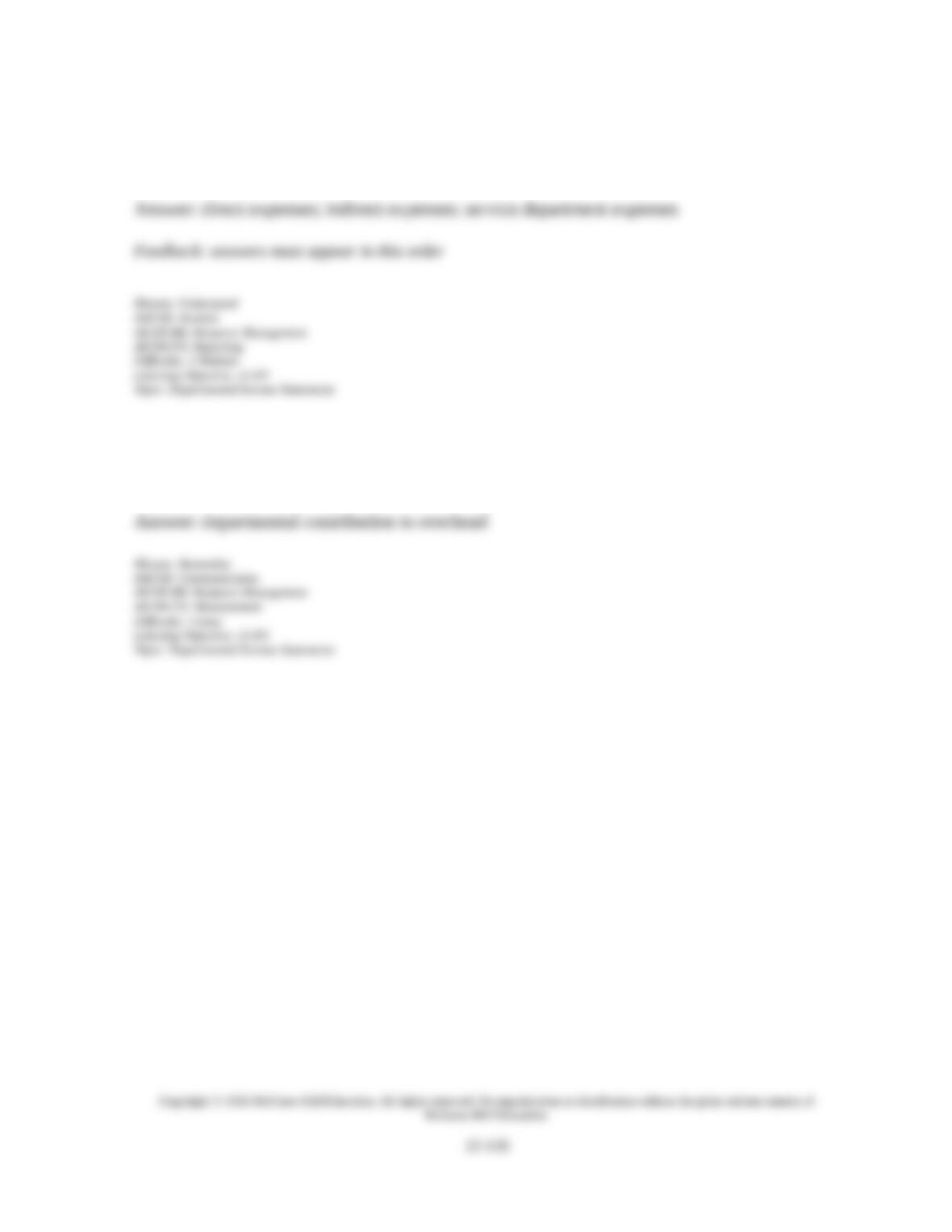169. Holliday, Inc., operates a retail store with two departments, A and B. Its departmental
income statement for the current year follows:
Holliday, Inc.
Departmental Income Statement
For Year Ended December 31
Dept. A Dept. B Combined
Sales............................................................. $180,000 $200,000 $380,000
Direct expenses............................................
Contributions to overhead........................... $ 50,100 $ 57,130 $107,230
Indirect expenses:
Depreciation--Building ........................ 10,000 11,760 21,760
Maintenance.......................................... 1,600 1,700 3,300
Utilities.................................................. 6,200 6,320 12,520
Office expenses.....................................
Total indirect expenses ......................... $ 19,600 $ 21,780 $ 41,380
Net income................................................... $ 30,500 $ 35,350 $ 65,850
Holliday allocates building depreciation, maintenance, and utilities on the basis of square
footage. Office expenses are allocated on the basis of sales.
Management is considering an expansion to a three-department operation. The proposed
Department C would generate $120,000 in additional sales and have a 17.5% contribution to
overhead. The company owns its building. Opening Department C would redistribute the
square footage to each department as follows: A, 19,040; B, 21,760 sq. ft.; C, 13,600.
Increases in indirect expenses would include: maintenance, $500; utilities, $3,800; and office
expenses, $1,200.
Complete the following departmental income statements, showing projected results of
operations for the three sales departments. (Round amounts to the nearest whole dollar.)
Dept. A Dept. B Dept. C Combined
Sales......................................................................... $180,000 $200,000
Direct expenses....................................................... 129,900 142,870
Contributions to overhead...................................... $ 50,100 $ 57,130
Indirect expenses......................................................
Depreciation—building......................................
Maintenance.......................................................
Utilities..............................................................
Office expenses..................................................
Total indirect expenses......................................
Net income...............................................................
Copyright © 2016 McGraw-Hill Education. All rights reserved. No reproduction or distribution without the prior written consent of
McGraw-Hill Education.
22-106

























































































